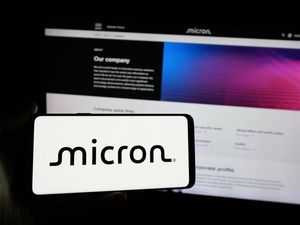Report demonstrates objective improvements in patients suffering from microvascular dysfunction
VANCOUVER and MINNEAPOLIS -  (NewMediaWire) - April 28, 2022 - Neovasc, Inc. ("Neovasc" or the "Company") (NASDAQ, TSX: NVCN) today announced that the European Heart Journal has published an article entitled, “Impact of the Coronary Sinus Reducer on Absolute Blood Flow and Microvascular Resistance Case Report.” The article, authored by Francesco Giannini, M.D., Maria Cecilia Hospital, Cotignola, Italy, describes objective improvements in the amount of oxygenated blood delivered to the heart muscle in two patients suffering from refractory angina treated with the Neovasc Reducer™ (“Reducer”).
(NewMediaWire) - April 28, 2022 - Neovasc, Inc. ("Neovasc" or the "Company") (NASDAQ, TSX: NVCN) today announced that the European Heart Journal has published an article entitled, “Impact of the Coronary Sinus Reducer on Absolute Blood Flow and Microvascular Resistance Case Report.” The article, authored by Francesco Giannini, M.D., Maria Cecilia Hospital, Cotignola, Italy, describes objective improvements in the amount of oxygenated blood delivered to the heart muscle in two patients suffering from refractory angina treated with the Neovasc Reducer™ (“Reducer”).
The first patient was a 58-year-old male with a history of coronary bypass surgery and multiple stenting procedures. Despite several attempts to relieve his chest pain, the previous procedures were not effective. The second patient was a 78-year-old male suffering from a blocked stented vessel and recurrent chest pain. Both patients had tried medicines to alleviate their pain but remained symptomatic.
“Our findings are an important step forward in the treatment of patients with refractory angina and microvascular dysfunction,” said senior author Julien Adjedj, MD PhD, Department of Cardiology, Arnault Tzanck Institute, Saint Laurent-du-Var, France. “For the very first time, we see real-time improvements in objective measures of microvascular dysfunction in patients suffering from refractory angina that have been implanted with the Reducer.”
The physicians measured the changes in absolute coronary blood flow and microvascular resistance in real time using continuous thermodilution while implanting the Reducer. Upon implantation, the physicians observed an improvement in coronary blood flow in both cases, from 100 to 148mL/min for the first patient and from 107 to 133mL/min for the second patient. Measures of microvascular resistance also improved.
Fred Colen, President and Chief Executive Officer of Neovasc, added, “It’s gratifying to see such promising, objective data targeting this large group of patients that have no other good options. These data, coupled with other ongoing prospective studies may provide important insights into the Reducer’s mechanism of action and potential benefits for patients with microvascular dysfunction.”
About Reducer
The Reducer is CE-marked in the European Union for the treatment of refractory angina, a painful and debilitating condition that occurs when the coronary arteries deliver an inadequate supply of blood to the heart muscle, despite treatment with standard revascularization or cardiac drug therapies. Reducer is investigational in the United States in the COSIRA-II clinical trial. Refractory angina, resulting in continued symptoms despite maximal medical therapy and without revascularization options, affects millions of patients worldwide, who typically lead severely restricted lives because of their disabling symptoms. The Reducer is designed to alter blood flow within the myocardium of the heart and increase the perfusion of oxygenated blood to ischemic areas of the heart muscle, which may provide relief of angina symptoms.
About Neovasc Inc.
Neovasc is a specialty medical device company that develops, manufactures, and markets products for the rapidly growing cardiovascular marketplace. Its products include Reducer, for the treatment of refractory angina, which is not currently commercially available in the United States and has been commercially available in Europe since 2015, and Tiara™ for the transcatheter treatment of mitral valve disease, which is currently under clinical investigation in the United States, Canada, Israel, and Europe. For more information, visit: www.neovasc.com.
Investors
Mike Cavanaugh
Westwicke/ICR
Phone: +1.646.877.9641
Mike.Cavanaugh@westwicke.com
Media
Sean Leous
Westwicke/ICR
Phone: +1.646.866.4012
Sean.Leous@westwicke.com
Forward-Looking Statement Disclaimer
Certain statements in this news release contain forward-looking statements within the meaning of the U.S. Private Securities Litigation Reform Act of 1995 and applicable Canadian securities laws that may not be based on historical fact. When used herein, the words “expect”, “anticipate”, “estimate”, “may”, “will”, “should”, “intend,” “believe”, and similar expressions, are intended to identify forward-looking statements. Forward-looking statements may involve, but are not limited to, the significance and promising nature of the case report and the growing cardiovascular marketplace. Forward-looking statements are based on estimates and assumptions made by the Company in light of its experience and its perception of historical trends, current conditions and expected future developments, market and other conditions as well as other factors that the Company believes are appropriate in the circumstances. Many factors could cause the Company’s actual results, performance or achievements to differ materially from those expressed or implied by the forward-looking statements, including those described in the “Risk Factors” section of the Company’s Annual Report on Form 20-F and in the Management’s Discussion and Analysis for the year ended December 31, 2021 (copies of which may be obtained at www.sedar.com or www.sec.gov). These factors should be considered carefully, and readers should not place undue reliance on the Company’s forward-looking statements. The Company has no intention and undertakes no obligation to update or revise any forward-looking statements, whether as a result of new information, future events or otherwise.View the original release on www.newmediawire.com





